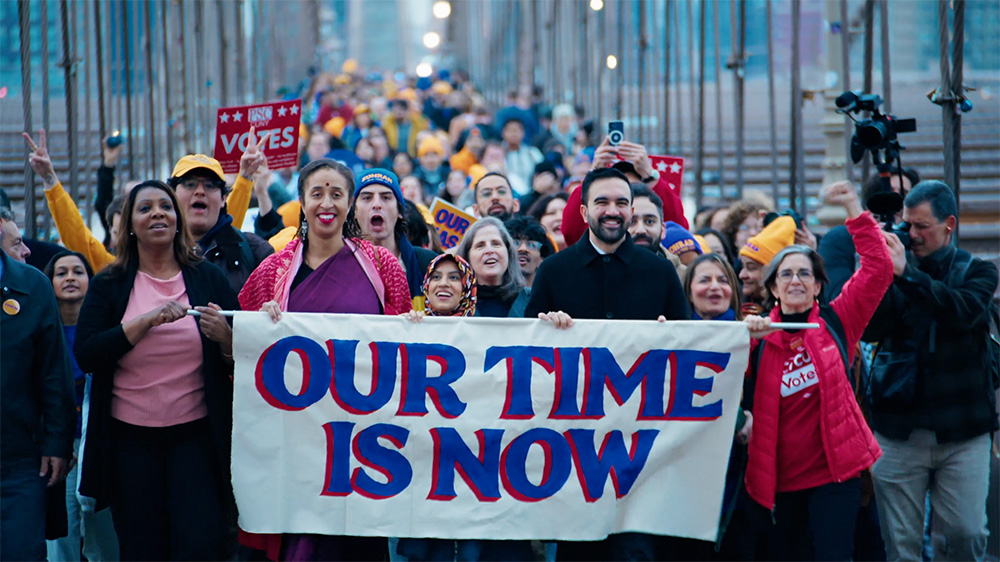New Yorkers woke up to a political milestone this week as Queens Assemblyman Zohran Mamdani claimed victory in the city’s mayoral race, becoming both the youngest and first Muslim person ever elected to lead the five boroughs. Across the Hudson, Congresswoman Mikie Sherrill won the New Jersey governorship on a platform of stability, fiscal discipline, and pragmatic leadership. Together, the neighboring states’ results tell a larger story about how Democrats are redefining power and priorities in 2025.
Mamdani’s campaign, powered by small donors and community organizers, promised sweeping reforms centered on housing affordability, fare-free public transit, and progressive taxation. His victory was hailed by some as a “socialist shockwave,” symbolizing a generational shift in urban politics.
Former governor Andrew Cuomo, whom Mamdani defeated in the Democratic primary, voiced skepticism over the new mayor’s readiness to manage New York’s complex bureaucracy. “This is no job for on the job training,” Cuomo said. “If you look at the failed mayors, they’re ones that have no management experience. That person has to be ready.” His comments reflect concern among establishment Democrats and business leaders about whether Mamdani’s ideals can translate into policy within the city’s legal and financial limits.
This election also produced one of the highest voter turnouts in recent memory, rivaling the 2001 post 9/11 race that brought businessman Michael Bloomberg to power. Then, New Yorkers chose a steady technocrat after Rudy Giuliani’s two turbulent terms. Bloomberg went on to serve three consecutive terms from 2002 to 2013, reshaping New York into a global hub of data-driven governance and economic innovation. His PlaNYC 2030 sustainability plan, widespread rezoning, and creation of the 311 service line turned the city into a model of efficiency. Yet Bloomberg’s era also drew criticism for widening inequality and aggressive policing under the “stop and frisk” policy.
Two decades later, the city’s mood has shifted from technocratic confidence to progressive urgency. Analysts note that while the 2001 turnout reflected unity in crisis, the 2025 surge was fueled by ideological passion. Mamdani’s campaign capitalized on voters’ frustration with rising rents, stagnant wages, and corporate influence in local politics.
Still, many of Mamdani’s most ambitious ideas face structural limits. The Metropolitan Transportation Authority, which controls New York’s subway and bus systems, is a state-run entity. The mayor appoints some members to the MTA board, but lacks the authority to set fares or budgets. A citywide free transit system would require Albany’s approval and billions in new funding.
His proposal to freeze rents also faces hurdles. Rent stabilization laws are governed at the state level, and sweeping freezes could trigger court challenges. Economists warn that while popular, such policies risk discouraging construction and deepening housing shortages unless paired with incentives for new development.
Even city-run grocery stores, another of Mamdani’s signature ideas, would depend on City Council approval and interagency coordination. Historically, municipal “food access” programs have been limited to underserved neighborhoods rather than competing with private supermarkets on a full scale.
On taxation, the mayor’s hands are tied. New York City cannot independently introduce new income or corporate taxes without state authorization. Mamdani has pledged to pursue “progressive revenue measures,” but any such initiatives must pass through Albany, where political resistance is expected.
Mamdani’s real influence may come through agenda-setting rather than direct implementation. By proposing bold ideas, appointing reform-minded commissioners, and shaping public debate, he can redefine how the city approaches equity and governance. He can’t rewrite the tax code or control the MTA, but he can change the conversation about what fairness looks like in New York.
Across the river, Mikie Sherrill’s victory represents the other side of the Democratic coin. The former Navy helicopter pilot and four-term U.S. Representative defeated Republican Jack Ciattarelli in one of the year’s most closely watched races. Where Mamdani ran on bold transformation, Sherrill leaned on competence and moderation. Her campaign prioritized infrastructure, small business growth, and middle-class stability.
Ciattarelli’s message of tax cuts and cultural conservatism resonated with rural and exurban voters, but Sherrill’s disciplined tone and bipartisan record carried the suburban counties that decide New Jersey elections. Observers say her measured leadership style reassured voters exhausted by polarization and fiscal uncertainty.
Taken together, the two victories reflect an evolving Democratic Party testing its identity across neighboring states. New York leans into an experiment in progressive governance, while New Jersey doubles down on pragmatism. For New Yorkers, the question now is not whether Mamdani can inspire change, but whether he can make it work inside the city’s famously unyielding machinery of power. For the Democratic Party, the contrast underscores the tension between its progressive and moderate wings and the strategic decisions that will shape its future. For voters nationwide, the message remains clear: local elections remain the testing ground where bold ideas meet the rigid boundaries of governance.






